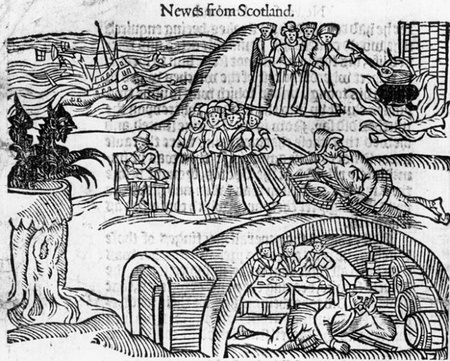The University of Aberdeen is introducing people around the world to the history of witch-hunting and the witch trials in Scotland.
With wide-brimmed hats, black cats, broomsticks and crooked noses, witches in popular culture are instantly recognisable a staple of Halloween events.
But in previous centuries changes in attitudes and approaches to magic led to suspicion and accusations that spread through Scottish communities as paranoid hunts sought to root out those thought to derive powers from the Devil.
The University has created an online short course ‘Scottish Witch-Hunting and the Rise of a Protestant Culture 1590-1690’ which provides an opportunity for anyone with a professional or personal interest in the history of Scottish witchcraft to take an in-depth look at Scottish attitudes and approaches to magic, the preternatural and the supernatural.
Professor Bill Naphy, Emeritus Professor of History, said: “Witches may been seen by guisers today as a bit of fun but in the middle of the 16th century, they were seen as conspirators trying to destroy society.
“This wasn’t unique to Scotland but the ripples of panic it caused were far reaching with Scotland’s execution rate per head of population about five times the European average.
“It means this is a really important area for study, not just in understanding about witchcraft and the brutal investigations, trials and often executions of those accused but in piecing together the wider issues and changes facing society at this time.”
The course explores the involvement of King James VI and I who in 1591 became convinced that a group of North Berwick witches tried to kill him and his wife when their vessel was caught in storms as they attempted to travel to Denmark.
As a result he becomes the only reigning monarch to ever serve as a judge in a witch trial and writes a book about witchcraft titled ‘Daemonologie’. This originally circulates in manuscript form and Professor Naphy says it was ‘clearly aimed at his sons so they will know when they become powerful how to find witches’ but is published widely following a panic which begins in Aberdeen in January 1597.
Professor Naphy explains: “The North Berwick witch trials of 1591 are notorious because of the sheer number of ‘witches’, widely agreed to be around 70 most of whom were women, executed in one hunt in a small Scottish town.
“But the lesser-known Aberdeen witch hunt in 1597 demonstrates how far panic swept across Scottish society, even prompting the demand for the publication of the King’s book.
“City leaders in Aberdeen became convinced that they had such a serious problem on their hands that they were able to secure a five-year commission to find and try all witches in the north-east.
“Once the idea took root that there was a witch plot or ‘cell’ the threshold for evidence necessary to prove guilt decreased and investigators become increasingly concerned with finding wider connections.
“In Aberdeen this saw accusations levied against the Leys family and at his trail Thomas Leys confessed, undoubtedly under coercion, to having led a coven of witches in a dance at the fish cross the previous Halloween – a satanic party right in front of the tollbooth.”
This soon led to extensive witch hunts across not only the north-east but many parts of Scotland.
“Thomas implicated a number of women that took the commissioners from Aberdeen to the tiny village of Lumphanan in their hunt for conspiratorial cells,” Professor Naphy added.
“In total 24 ‘witches’ were executed in Aberdeen and Aberdeenshire, including a significant proportion of the adult female population of Lumphanan and this little known 1597 hunt triggered panic across many regions of Scotland that resulted in many more deaths through execution.
“This is an important period to highlight dangers of a moral panic and study of these events serves as a timely reminder that while today witches are seen as part of the fun of Halloween, we should not forget brutal treatment and execution of those accused of so-called crimes of dark magic.”


